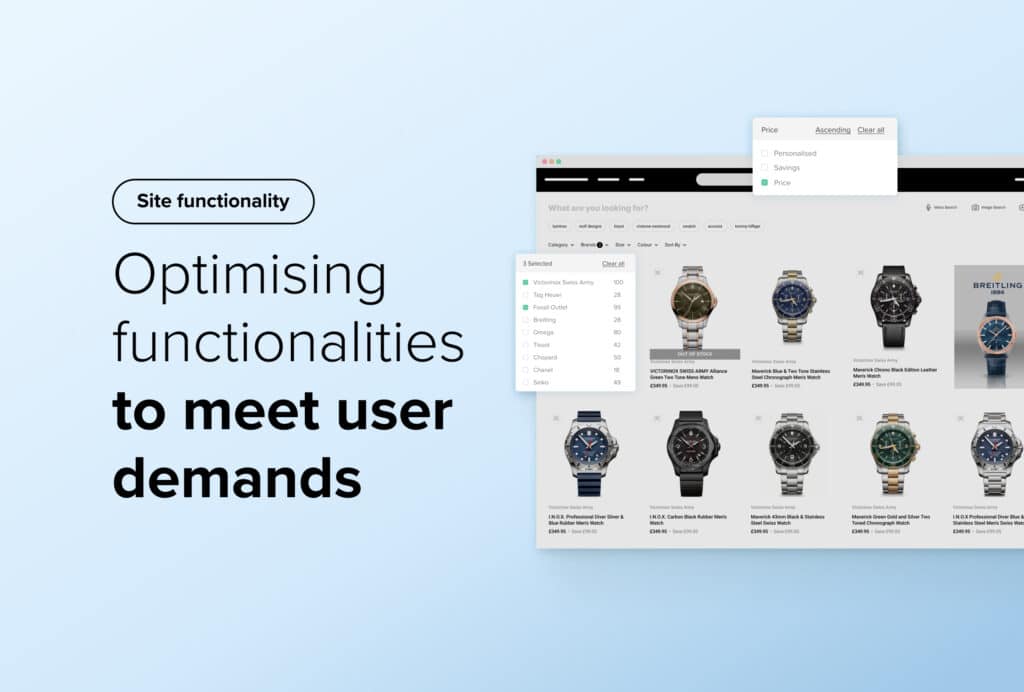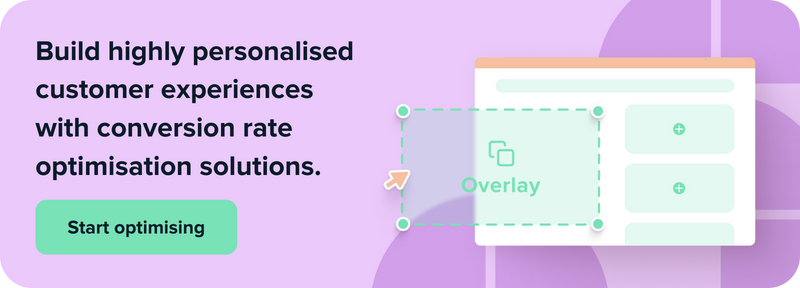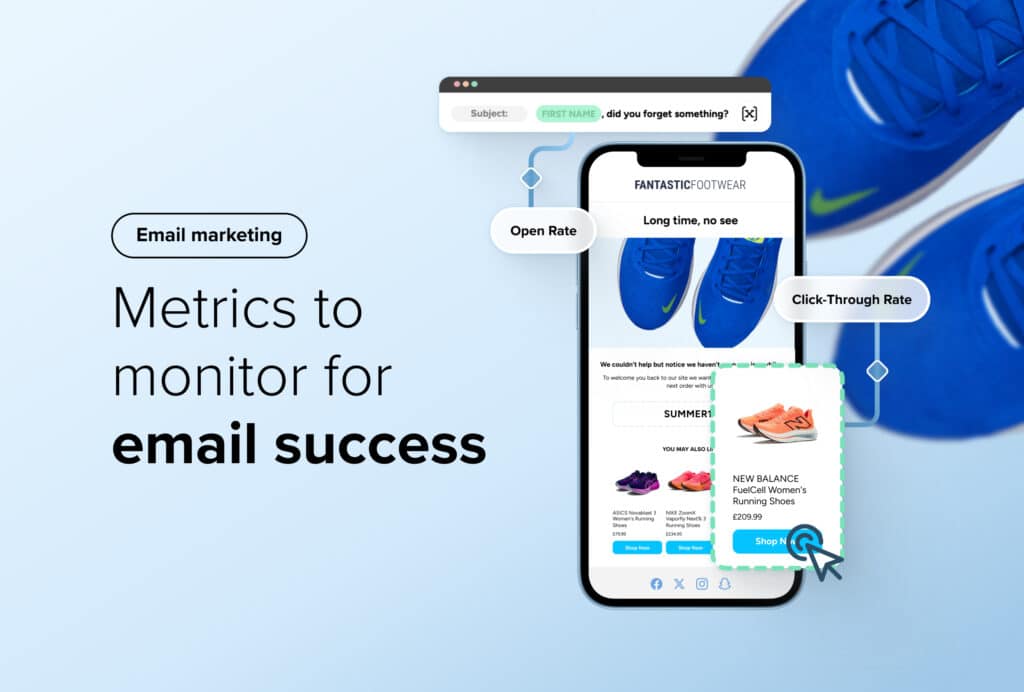6 Functional Requirements for eCommerce Website Success
By Bethany Llewellyn • Last updated: Tuesday Jun 4th, 2024

In the saturated eCommerce space, standing out from your competitors relies on developing strategies that effectively capture the interest of new customers and navigate them through the customer journey.
Crucial to this is considering the functionalities your website needs to achieve eCommerce success.
In this article, we present these key functionalities that allow you to effectively engage visitors and convert them into loyal customers.
What are website functionalities?
Functional requirements are product attributes or functions that a web development team must implement in order for a user to accomplish tasks such as completing a purchase.
The major differences between functional and non-functional requirements are based on their scope and purpose:
- Functional requirements: These requirements are the core eCommerce features that allow users to interact with your website. For example, adding product filtering options such as price, size and popularity of items.
- Non-functional requirements: These requirements form the on-site user experience and imply different levels of expectations, such as the scalability and performance of your website.
These functional and non-functional requirements are the pillars of your eCommerce site and define the tasks of your website development team.
But driving conversions in 2022 is heavily dependent on appealing to a younger audience.
While Millennials currently hold the most purchasing power with over $2 trillion of disposable income, the upcoming tech-savvy Gen Z are making their demands known.
With a big change in consumer behaviour due to generational differences, priorities in key website functionalities have shifted over time to appease a younger consumer generation.
Take a look at mobile for example. Within the last decade, mobile usage has increased vastly with over 6 billion smartphone users across the globe by 2021, so it’s no surprise that it’s now the dominating device for online shopping.
This means eCommerce retailers need to be aware of the latest trends and adopt new technologies to stay ahead of the curve and meet their customers’ expectations.

6 key functionalities of a successful website
Your website functionalities and marketing strategies are synonymous with eCommerce success.
Below we outline aspects of each of these that you can implement on eCommerce websites to encourage conversions from both new and existing customers.
1. A speedy on-site experience
Your website speed is a crucial factor in any eCommerce solution and can often be the difference between a conversion or a lost sale.
Having a website with slow load times, inaccurate results, or difficult navigation can have a significant impact on your conversion rate and is not the experience your customers are looking for.
It’s not just a quick and easy checkout that users desire, but quick load times — and your site speed can have a huge impact:
- 53% of users bounce after a 3-second delay on mobile devices.
- Faster sites have up to 70% longer session duration.
- Faster websites have 35% lower bounce rates on average.
By improving your site load time, you’ll see an improvement in customer satisfaction, reduced bounce rates and an increase in conversion rates.
How can you get started on improving your site speed?
Let’s start with design. The key to building a super-fast site is optimising site images, implementing a minimalistic design and avoiding those large media files.
You don’t want to deter your customers. Not everyone who visits your site will have super speedy broadband, so sticking to optimum web design functionalities will ensure each and every customer who browses your site has a great experience.
When thinking about site speed, don’t neglect your search speeds. From here you want to take a look at tools like an AI-powered Search to ensure you return results to customers in the blink of an eye.
This not only helps to reduce bounce rates but makes your customers feel looked after by providing a seamless shopping experience that delivers specific results instantly.
2. The mobile-first approach
The ability to access a world of shopping through your fingertips has revolutionised eCommerce, with over one billion people using mobile devices to browse online every day.
As of May 2022, mobile searches accounted for 58.3% of all website traffic. And with that figure only set to increase, a mobile-first approach is now essential.
Mobile optimisation encompasses many considerations, such as design features, font size, image compatibility and even the positioning of CTAs like the checkout button.
mCommerce skyrocketed during the pandemic, and online businesses with mobile optimised sites have seen benefits such as:
- Enhanced customer experiences
- Increased conversion rates
- Reduced basket abandonment
- Improved customer loyalty
Social networks are at the heart of this surge in mobile shoppers, with in-app shopping opportunities on platforms like Instagram and Pinterest becoming increasingly popular.
The rise in social media usage presents the perfect opportunity to replicate social experiences on-site using tools like Visually Similar Search.
Allowing users to discover products visually, the way they’re used to on social platforms, helps to improve engagement and increase product interactions, especially amongst the younger generations.
What you can do: Analyse your customers’ browsing behaviour to identify your target audience, those who shop via mobile, and other demographic information to ensure you optimise the experience and encourage purchases.

3. The power of personalisation
Personalisation is at the forefront of eCommerce and is now expected by the majority of consumers.
Whether they’re a new customer or a returning one, using personalisation on your site can have a huge impact on your conversions.
A study from Epsilon found that 80% of consumers are more likely to make a purchase from a brand that provides a personalised experience.
With personalisation tools like Digital Assistant, you can implement tailored messaging strategies to surface information at the most influential time in the buyer’s journey, helping to prompt quicker purchases and secure sales.
But there’s no personalisation without data. Some data collection points that power personalisation in eCommerce are:
- Website traffic
- On-site behaviour
- Customers providing their own data
- Email interactions
- Purchase history
Often, this data collection is driven by artificial intelligence or machine learning, which tracks various data points on eCommerce sites to deliver the truly personalised experience most consumers are looking for.
What you can do: Consider exploring AI-powered conversion rate optimisation tools to implement on your website.
Personalisation is integral at every stage of the conversion process and can be adopted into any eCommerce marketers strategy:
- Using customers’ names: Make visitors feel valued by using their names, whether it’s in emails or on-site.
- Offering personalised recommendations: Suggest relevant products throughout the buyer’s journey to increase average order value and provide a satisfying experience.
- Requesting a review after a purchase: Provide proactive customer service after their shopping experience with you whilst solidifying social proof for future customers.
Related: eCommerce personalisation: What it is and how it engages customers
4. Provide seamless customer journeys
One of the main goals of every eCommerce business is to provide a simple and seamless experience for its customers.
Since customer dropoff is heavily influenced by how easy the customer journey is, it’s something that is vital to pay attention to when thinking about the functionalities of your website.
The key is to keep the overall buying experience short, simple and friction-free.
- Keep the process simple: Minimise the number of steps users need to take in order to complete a purchase to reduce cart abandonment.
- Clearly display delivery options: From delivery prices, minimum order value for free delivery or next day delivery, ensure important information is visible at all times.
- Offer a guest checkout: This is a great option for first-time visitors or those who may have forgotten their account details in order to keep that speedy checkout process.
- Auto-fill customer’s details: Allow auto-fill in personal details forms to help reduce your basket abandonment rate and prevent human errors.
When it comes to payment schemes, there are also ‘buy now pay later’ and flexible return options to consider, that are extremely attractive to give the effect of a brick-and-mortar shopping experience.
This way to shop has become increasingly popular with younger generations, as it allows instant gratification with the ability to spread the cost of a purchase.
Overlays are a versatile way of attracting customers by displaying your delivery, returns and payment details or offering promotions to encourage users to stay on site.
Pro tip: The post-purchase experience is all about making customers feel valued and connected to your brand, so don’t neglect it. Explore a range of post-purchase loyalty-driving strategies to secure repeat purchases from engaged users.
5. User-friendly navigation
Since it takes a matter of milliseconds for a visitor to form an opinion about your site, you don’t want to deter them with poor navigation.
Improved site navigation typically goes hand in hand with your website design features.
From the logo and its clickability, the main navigation bar or the number of items and icons on the menu bar, with a simple and optimised navigation experience you’re guaranteed to see more returning customers while attracting prospective customers.
A survey from Clutch found that when it comes to website usability and features:
- 94% of participants stated that easy navigation was the most important feature.
- 91% answered that descriptions of products or services were useful.
- 83% relied on the design features of a website.
- 67% of participants stated links to social media were important.
Whether users browse for leisure or work, these stats show there is a clear consensus on what consumers want to see from eCommerce websites.
What you can do: Use the data you have. You want to ensure you meet customers’ wants and needs, so work with the information available to you to provide an optimum on-site experience.
6. Third-party integrations
When setting up a new online store, every eCommerce retailer should consider the complete business process system.
Your third-party integrations are a significant requirement for eCommerce website success since they provide a friction-free customer experience.
With the resources you’ve saved from third-party integrations, you can focus your efforts on other areas on your site that help improve engagement and drive conversions.
Below is a list of key third-party integrations to add to your commerce website:
- Payment gateways: Integrated payment gateways like PayPal or Stripe relieve resources by allowing the manual, time-consuming accounting and payment processes to work seamlessly together.
- Shipping tools: Provide a straightforward delivery process from the buyer’s perspective. Simplifying ordering, enabling parcel tracking and improving the speed of delivery and shipping integrations can increase customer satisfaction.
- Live chat: Delivers key information to consumers quickly and easily. This provides better user experiences through customer support and encourages users to return time and again.
- Email marketing: Creates tailored offers to encourage purchases. Email marketing integrations help retailers build stronger relationships with personalised communications.
- Analytics: Allows online retailers to monitor user behaviour to inform decisions and enhance revenue. Integrations like Google Analytics provide key insights into user activity.
Managing all of the above on your own can become time-consuming – and ultimately counterproductive – so using a third-party eCommerce platform is a great way to get started and relieve your own resources.
Key takeaways
Even with a crowded eCommerce space, that doesn’t mean your business can’t stand out.
With the right strategies and functionalities implemented on your website, you’ll stand out from the competition and on the road to a successful website.
With optimised marketing efforts, you can ensure you attract new visitors and retain loyal customers that are engaged with your brand.
See how Salesfire can help you optimise your product discovery experience, email one of our experts at enquiries@salesfire.com or book a free demo of our personalisation tools.



